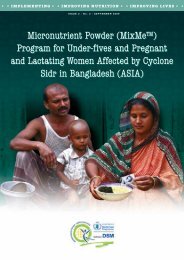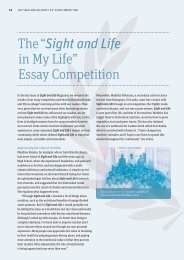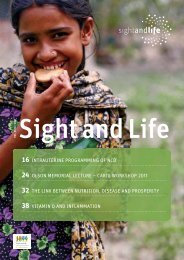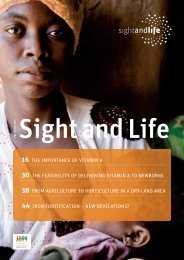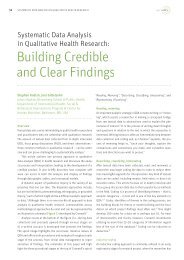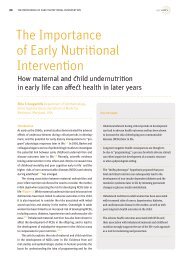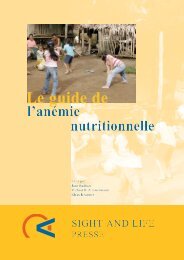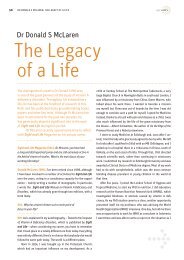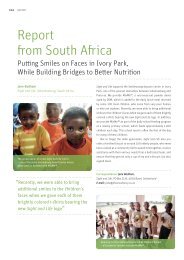Newsletter 02 2006.pdf - Sight and Life
Newsletter 02 2006.pdf - Sight and Life
Newsletter 02 2006.pdf - Sight and Life
You also want an ePaper? Increase the reach of your titles
YUMPU automatically turns print PDFs into web optimized ePapers that Google loves.
NEWSLETTER 2/2006<br />
9<br />
SIGHT AND LIFE<br />
by the pupils have considerably<br />
improved their school performance.<br />
Conclusion<br />
The follow-up <strong>and</strong> evaluation<br />
of the Nutrimad SFP during the<br />
2004 – 2005 school year has essentially<br />
allowed us to highlight<br />
the poor nutritional status of children<br />
<strong>and</strong> to establish, or highlight,<br />
the adequacy of the type of snack<br />
provided:<br />
• over the 110 days of the program,<br />
the children took 68%<br />
of opportunities offered them<br />
to eat the gruel;<br />
• each portion consumed covered<br />
16% to 22% of their energy<br />
requirements <strong>and</strong> 75% of<br />
their requirements of the main<br />
micronutrients;<br />
• the snacks did not take the<br />
place of regular meals.<br />
Furthermore, at the end of the<br />
year the most regular consumers<br />
had, in comparison with the<br />
others, a better nutritional status<br />
(40% vs. 50% delayed growth),<br />
were less likely to have to repeat<br />
their school year (20% vs. 30%),<br />
<strong>and</strong> did better at the end-of-year<br />
exams.<br />
These very encouraging results<br />
are currently undergoing confirmation<br />
in the 2005 – 2006 period<br />
at the same schools. The integration<br />
of 8 control schools into the<br />
evaluation process should allow<br />
us to highlight not only the effect<br />
of snack consumption <strong>and</strong> nutrition<br />
education on the children’s<br />
nutritional status <strong>and</strong> school<br />
performance, but also the effectiveness<br />
of the present strategy<br />
within the context of the education<br />
system concerned.<br />
References<br />
Figure 6. Effects of gruel consumption on average marks, raw <strong>and</strong> adjusted,<br />
obtained by pupils at the end-of-year exams (averages not accompanied by<br />
identical letters differ to the level of significance indicated). Groups according<br />
to gruel consumption: 1) less than 20%; 2) 20% to 40%; 3) over 40%.<br />
(1) Adjusted for indicator variables of the characteristics of the school, characteristics<br />
of the class (number of children, school year), characteristics of the teachers (absenteeism,<br />
mark given by monitors of participation in the scheme), of the children’s<br />
family group (index of possessions, parents’ level of education), <strong>and</strong> characteristics<br />
of the children (gender, age, Size/age Z-score at the start of the year).<br />
1. Laillou A, de Sesmaisons A, Ralison<br />
R et al. (2005). Distributing fortified<br />
<strong>and</strong> high-energy density gruel to<br />
reduce the failure rate <strong>and</strong> improve<br />
nutritional status of Antananarivo<br />
schoolchildren. SIGHT AND LIFE<br />
<strong>Newsletter</strong> 2: 22–26.



